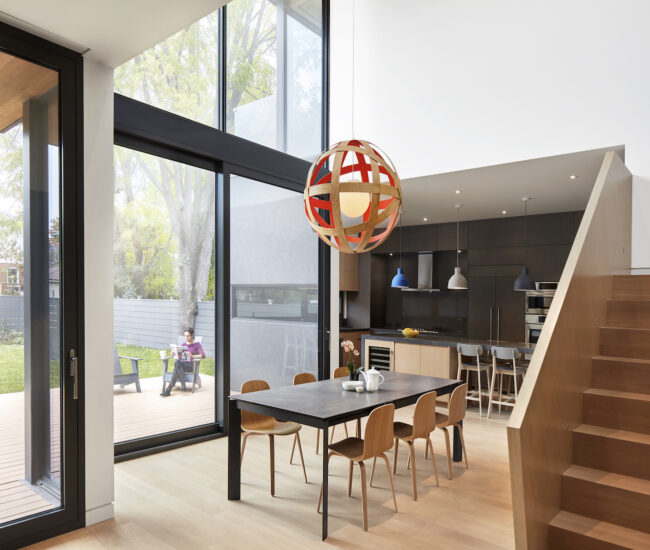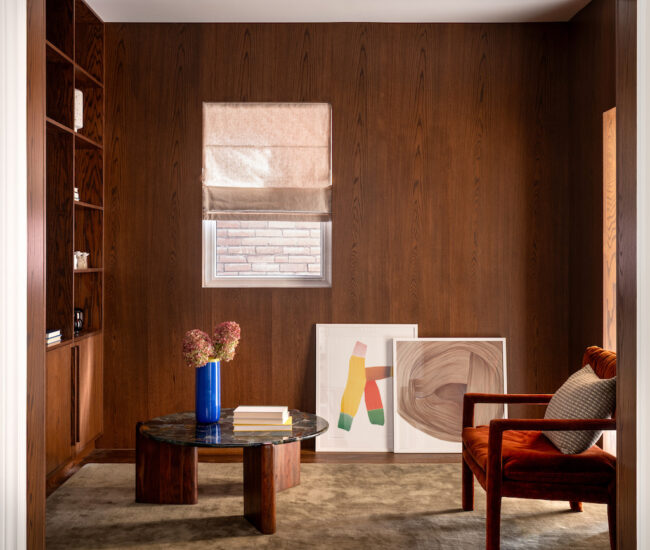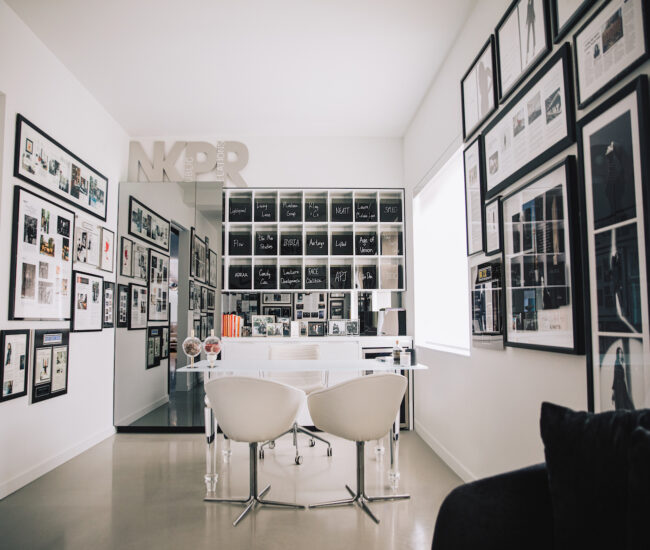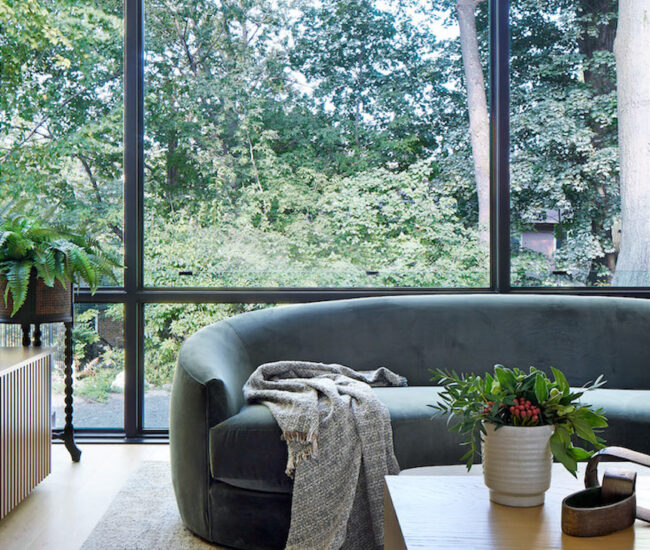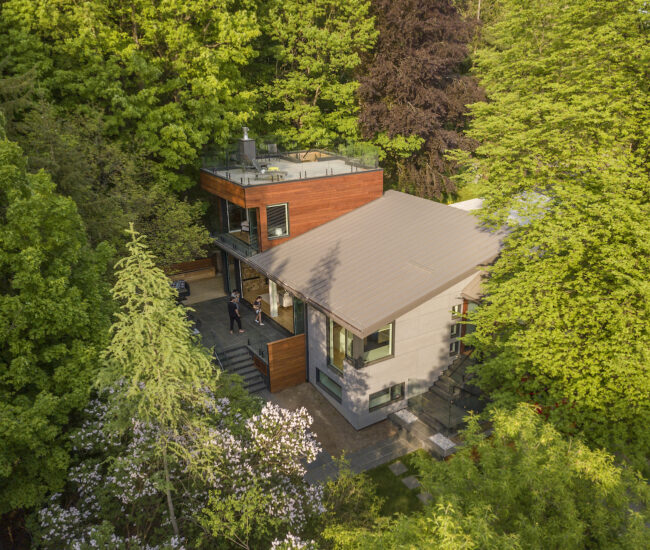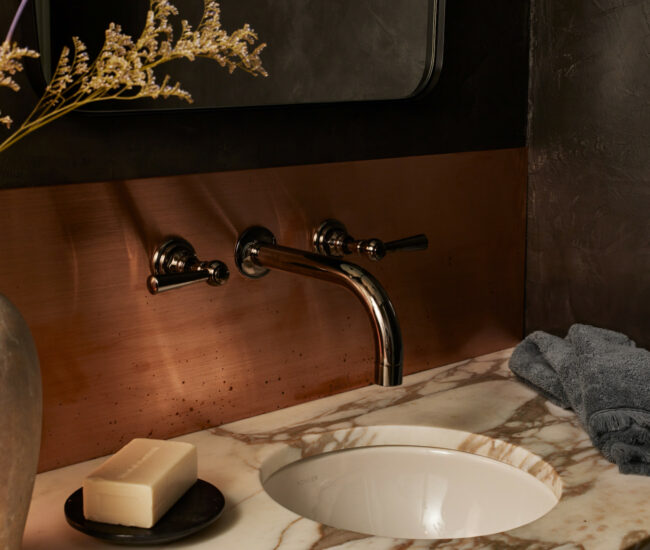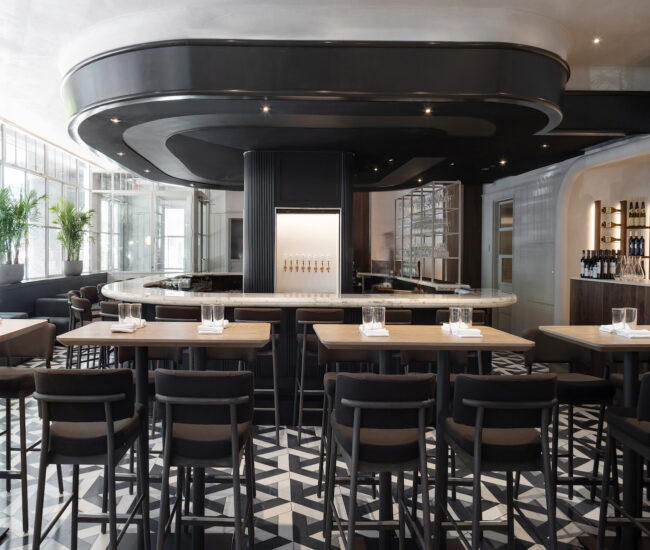State-of-the-Art Gallery and Learning Spaces Make Up New Toronto Holocaust Museum
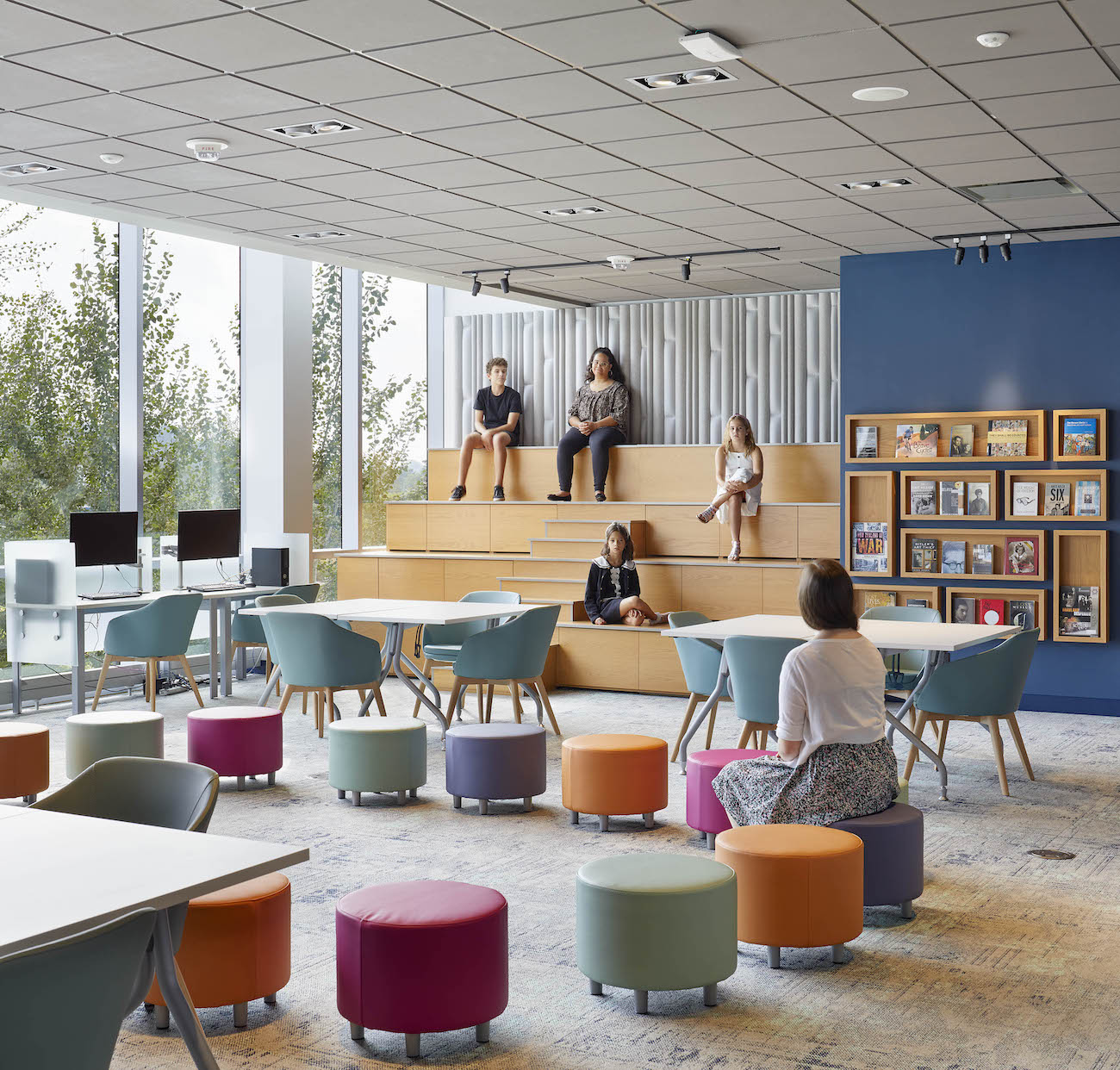
In North York’s Prosserman Jewish Community Centre, interdisciplinary design firm Reich&Petch craft a dynamic space for remembrance and education.
When Tony Reich, senior principal architect at Reich&Petch, took on the task of designing Toronto’s first and only Holocaust Museum, it was both a professional and personal endeavour. As a grandson, nephew and cousin to Holocaust survivors himself, Reich understood the value of making space for education and dialogue. “Like many families of survivors, it was a taboo and difficult subject to discuss while I was growing up,” says Reich. “So, I felt that it was so important to have a centre like this, where stories can be brought to light and shared with people in a healing and cleansing way.” Designed to educate its visitors, the final result marries organic exhibition navigation with tech-driven immersive experiences, and an optimism that celebrates Jewish identity and culture of the past, present and future.

Encompassing nearly 10,000 square feet, the Toronto Holocaust Museum replaces an education centre that previously operated from a neighbouring building. Located at the Prosserman Jewish Community Centre just south of Bathurst and Finch, the museum’s mezzanine and entrance depict a unique face in contrast to typical memorial sites.

With the sounds of recreational activities echoing from the floor below – where a basketball court, childcare facility and cafeteria live – the museum’s entrance is buzzing with life, illuminated by floor-to-ceiling windows, adjacent to a colourful lounge area and adorned with archival images of Jewish life in a pre-war Europe. “One of the most important things in learning about the Holocaust is to recognize the life that was destroyed,” says Michelle Fishman, museum director of marketing and communications. “Jews aren’t some strange beings that you’re learning about through history books or the anti-semitic incidences reported in the news. We’re just like anybody else; human beings with a long history of life and culture. It was important that before visitors enter the museum, they understand the life at the centre of it all.”

Inside, Reich&Petch’s design incorporates 11 testimony stations equipped with large touchscreen monitors, providing visitors with lifelike accounts from survivors. Here, guests can prompt questions and witness the survivors’ responses “face to face.” Augmented Reality technology, accessed through iPads, immerses visitors in the exhibitions and invites them to follow the story of individual survivors, adding a layered dimension atop the physical exhibitions. In total, the museum boasts over 220 minutes of survivor testimony, unveiling the experiences of more than 70 Holocaust survivors.

Above all, the Toronto Holocaust Museum is memorial, but it’s also a beautifully designed, engaging and evocative space to be in. With respect to the museum’s mission to educate, Reich&Petch designed the space with a variety of interactive walkways, where visitors can take in archival documents, paraphernalia and travelling artifacts from across the globe. All this is part of the design firm’s approach to commemorating such a solemn historical event.
“It is an interesting design challenge to create memorials that are also educational,” says Reich. “We, as a firm, have a very collaborative design approach. We were lucky that the museum facilitated a lot of focus group meetings with community members, so we could ask important questions and ensure that they could really be part of the process and part of the design, and feel a sense of shared ownership over this project as a whole.”

Along with a 40-seat theatre showcasing immersive film experiences, state-of-the-art digital screens were used to reimagine the former education centre’s Holocaust memorial. Here, a meditative space gives the illusion of being in a forest, nodding to the Killing Fields of Eastern Europe and the natural landscape on which the Toronto Holocaust Museum stands today. As visitors walk toward the screens, a sensor dims the photographic backdrop and reveals legible text.

Beyond the exhibition galleries, breakout rooms were incorporated to make space for community building and education sessions for visiting school children. Casual seating fills the colourful areas and provides a sense of place and accessibility.
The Museum is designed to deepen public knowledge and understanding while inspiring visitors to think critically about the tragedies of the Holocaust and to make connections between world events and contemporary Canadian life. It uniquely incorporates celebratory elements of Jewish heritage with a stark address to growing Holocaust denialism and antisemitism. By merging a memorial with education, the Toronto Holocaust Museum pulls visitors into the experiential elements of the exhibition, and elects them as the medium for driving further dialogue. “Our hope is that this can be a place where visitors can have their questions about the Holocaust answered, but also a place that can spark new ones,” says Fishman. TORONTOHOLOCAUSTMUSEUM.ORG


